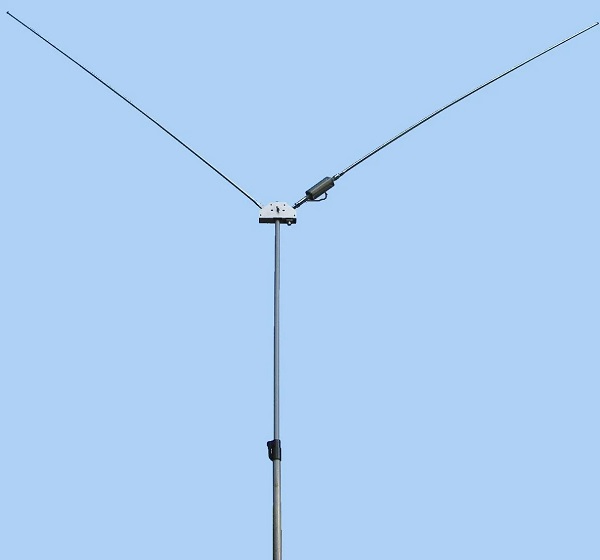Products
Current location: >>Home >> News>> Mastering High Frequency Base Station Antennas: Unveiling the Power of Ultra-High Speed Connectivity
Mastering High Frequency Base Station Antennas: Unveiling the Power of Ultra-High Speed Connectivity
In the ever-evolving world of technology, ultra-high frequency (UHF) base station antennas have emerged as a game-changer in the realm of communication. This comprehensive guide delves into the intricacies of UHF base station antennas, exploring their design, functionality, and applications. Whether you are a tech enthusiast, a professional in the telecommunications industry, or simply someone interested in understanding the technology behind our connected world, this guide will provide you with valuable insights into the world of UHF base station antennas.

I. Introduction
A. The Importance of UHF Base Station Antennas
As wireless networks evolve to support cutting-edge applications with massive data demands, the utilization of higher radio frequencies is inevitable. Ultra-High Frequency or UHF spectrum in the 300 MHz to 3 GHz range has significant potential thanks to wide bandwidth availability. UHF base station antennas are crucial for enabling next-gen networks in this new frontier.B. The Role of UHF Base Station Antennas in Modern Communication
UHF antennas allow networks to leverage valuable UHF spectrum resources for dramatically increasing throughput capacities. Their directional beamforming characteristics aid efficient frequency reuse for denser urban cellular and WiFi deployments. This makes UHF antennas a driving force behind technologies like 5G, industrial IoT, telemedicine and autonomous systems.II. Basics of UHF Base Station Antennas
A. What is an UHF Base Station Antenna?
A UHF base station antenna is a specialized radiating element designed to transmit and receive radio signals in the UHF frequency bands allocated for mobile communications. Key parameters include high gains, narrow beams and frequency tunability across the entire UHF range.B. Key Features and Characteristics
UHF antennas leverage state-of-the-art materials like semiconductor arrays and advanced electromagnetics for features such as beam steering, beamforming, high directivity and multi-band operation. This enables network flexibility while meeting stringent emissions standards.III. Design and Construction of UHF Base Station Antennas
A. Antenna Types and Configurations
Common types include panel antennas using patches, waveguides or cavity slots, as well as active phased arrays. Sectors, dual-polarization and multi-band arrays optimize performance for myriad applications.B. Material Considerations
Semiconductors, ceramics, aerospace alloys and exotic dielectrics enable frequency agility, high power handling and resiliency in heat, water, shocks and EMI. This allows durable, maintenance-free operation under harsh conditions.IV. Functionality and Performance
A. Signal Strength and Range
UHF antennas boost cell radii to many kilometers using high directivity gains over 15-25 dBi. Electronic beam-steering further extends dynamic range up to 100s of kilometers.B. Coverage Area and Capacity
Tightly focused beams combined with advanced signal processing unlock 1000x capacity increases. Massive MIMO arrays enable location services with centimeter-level precision.V. Applications of UHF Base Station Antennas
A. Telecommunication Networks
UHF anchors 5G rollouts leveraging new spectrum to deliver ultra-broadband with low-latency. Dynamic spectrum management optimizes utilization.B. Satellite Communications
Aerospace antennas facilitate high-throughput satcom with flexible coverage worldwide on moving vessels and aircraft.C. Wireless Internet Services
Fixed wireless networks access hard-to-wire rural homes with multi-gigabit capacity using long-range UHF backhaul.VI. Installation and Maintenance
A. Site Assessment and Preparation
UHF performance depends on precise measurements of factors like soil conductivity and clutter. Adaptive mounting solutions overcome environmental challenges.B. Installation Guidelines
Specialized rigging and power distribution ensure safe installation and commissioning of active arrays weighing hundreds of kilograms.C. Maintenance Tips and Best Practices
Real-time monitoring and predictive algorithms aid remote maintenance by flagging anomalies. Over-the-air firmware updates minimize downtime from upgrades.VII. Case Studies
A. Successful Deployments of UHF Base Station Antennas
A utility leveraged high-power UHF antennas to backhaul terabits of data from thousands of smart meters. Military applications involve beamformed arrays demonstrating advanced beam agility.B. Challenges and Solutions in Real-World Scenarios
Minimizing interference in dense environments required innovative null-steering techniques. Transportable UHF networks provided connectivity after natural disasters.VIII. Future Developments and Innovations
A. Technological Advancements
Meta-materials and nanophotonics will facilitate reconfigurable holographic beams. THz radio enables terabitconnectivity leveraging yet higher frequencies.B. Emerging Applications and Use Cases
Industries like automotive, public safety, utilities, manufacturing will harness private networks. Next-gen WiFi, Bluetooth and consumer IoT will also tap UHF potential.IX. Conclusion
A. The Significance of UHF Base Station Antennas in the Future of Connectivity
UHF is poised to revolutionize industries and lives by delivering truly wireless broadband at massive scale. Future-proof networks will depend increasingly on advanced UHF antenna solutions.B. Encouraging Continued Research and Development
Governments must facilitate wider UHF spectrum access and promote collaborations between academia and industry to progress antenna technologies aligned with emerging applications and usage models. The possibilities are endless!

 Mobile Signal Booster
Mobile Signal Booster